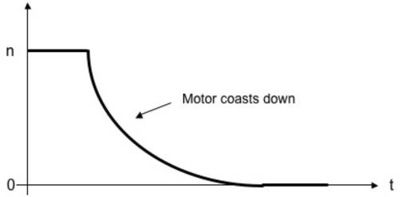Difference between revisions of "Safe torque off"
From Granite Devices Knowledge Wiki
| [checked revision] | [checked revision] |
| Line 19: | Line 19: | ||
[[Category:Technology]] | [[Category:Technology]] | ||
[[Category:Glossary]] | [[Category:Glossary]] | ||
| − | |||
Revision as of 21:49, 9 August 2013
Safe torque off a.k.a. STO is a motor drive function that disables drive's ability to produce torque with motor and also prevents unintentional motor start-up. STO is built with redundancy a way that guarantees the removal of torque even in the case of single failure of any component of the system.
Usefulness
Built-in STO in drive provides following
- Pros
- Eliminate the need of power cutting relay or contactor
- Can provide dynamic braking of motor under STO condition instead of letting motor free-wheel which usually increases safety
- Reduce cost of safety circuity
- Simplify wiring
- Cons
- Most STO implementations not safe with brush DC motors and also may cause AC motor to lock-up in certain magnetic pole angle (thus motor can still produce torque but cannot rotate more than 1/2 revolutions)
STO in Argon servo drive
Argon (servo drive) has 4-way STO function making it one of the most fail safe implementations available. Safety is being provided by four simultaneous actions:
- Removing AC input power from power stage by the means of internal safety rated relay
- Cutting gate drive voltage from power stage rendering power stage inactive
- Activating dynamic braking of motor
- Software (firmware) disabling motor control
The cutting of AC power makes Argon safe even with DC motor and does not allow AC motor lock up.
